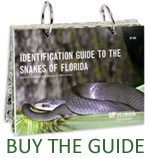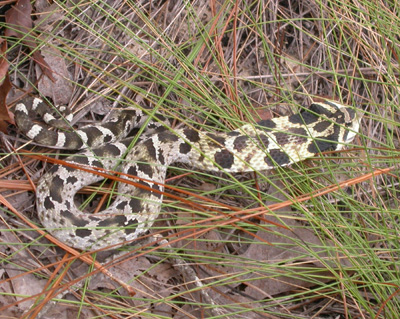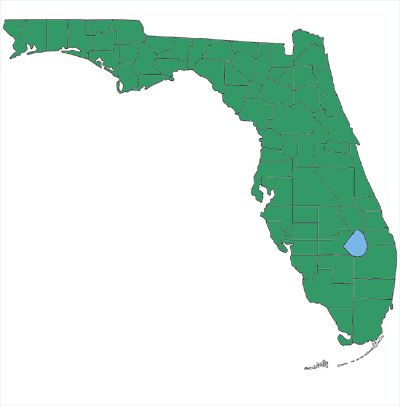Florida's Snakes

Eastern Hog-nosed Snake
(Heterodon platirhinos)NON-VENOMOUS

Blotched
Eastern Hog-nosed Snake

Photo by Esther Langan. This photo may not be used without the express written permission of the photographer.
Size:
Usually 1.5–2.5 ft. (max. ~3.5 ft.)
Identification:
Body color may be grayish, yellow, olive, brown, or black; underside of the tail is lighter than the belly. Back and sides are usually marked with irregular, dark brown-black blotches but may be solid black. Neck is marked with large blotches; forehead is marked with a dark band that extends behind the eyes to the corners of the jaw. Scales have obvious lengthwise ridges (keels); scale on the tip of the snout turns up slightly. When threatened, it may play dead or flatten its neck (as seen in the photo above) and hiss, hence the nickname “spreading adder.” It is sometimes mistaken for the venomous Pygmy Rattlesnake but has round eye pupils. This snake lays eggs.
Habitats:
Found throughout Florida in areas with sandy soils, including hardwood and pine forests, agricultural areas, coastal beaches, and wetland edges.
Diet:
Mostly toads and frogs, also small lizards
Map by Monica E. McGarrity - may be used freely for education.
